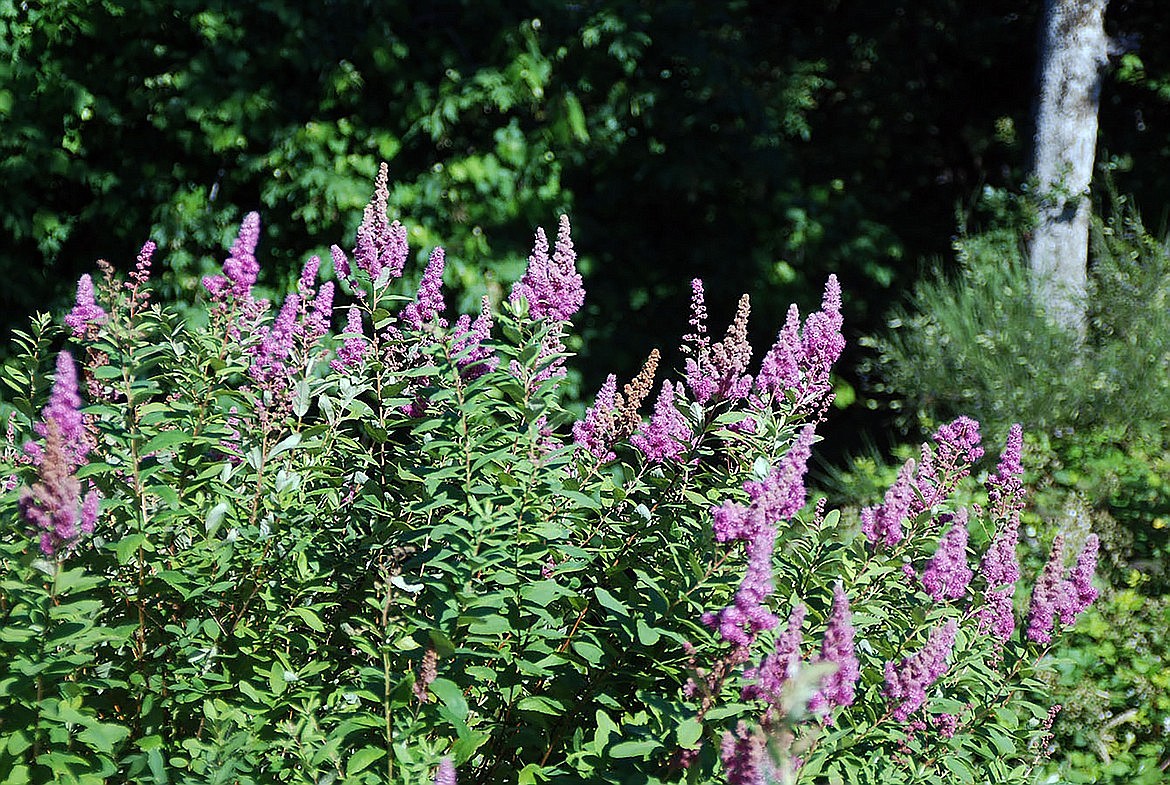PLANT NOTES: Douglas spirea
Plant notes from the Arboretum
Douglas spirea (Spiraea douglasii)
A rose by any other name … Douglas Spiraea (Spiraea douglasii) is a member of the rose family, but unless you're really into plants you probably wouldn't guess it. Native to western North America, this fast-growing, thornless deciduous shrub has also been called Hardhack as early settlers found the dense masses of Douglas Spirea “hard to hack” through. Other common names include Western, Pink, or Rose Spiraea and Steeplebush. Mature plants grow 4-6 feet tall and almost as wide. They spread by suckers creating colonies over time and range from sea-level to 6,500-foot elevation thriving in full sun to partial shade.
Though most common west of the Cascade mountains, Douglas Spiraea is also found in wetland habitats throughout North Idaho and western Montana. Perfect for stream bank stabilization, shorelines, marshes, bogs and damp meadows, it thrives in places with fluctuating water tables characterized by flooding to water-logged or consistently moist soil, though it can survive nicely in areas that are only seasonally wet.
From June through September, Douglas spiraea produces fragrant, showy, purple-pink flowers on branch tips in upright plumes resembling steeples, which can be dried for floral arrangements. Extra long stamens protruding from the flowers create a fuzzy, cotton candy look attracting hummingbirds, butterflies and other pollinator insects.
The dark green, oblong leaves with pale green to velvety white undersides turn goldy-yellow in the fall. Brown, dried seed heads remain after the leaves have fallen, a favorite for grouse, while other birds and small mammals prefer the seed filled capsules. Dense thickets of Douglas Spiraea shelter small animals and offer nest sites for birds.
You can find Douglas Spirea growing in the Riparian Rainforest habitat in the North Idaho Native Plant Arboretum. Open to the public, parking for the Arboretum is at 611 S. Ella Ave., Sandpoint, or on the street.
Douglas Spirea is found on page 106 of the KNPS publication, “Landscaping with Native Plants in the Idaho Panhandle,” available at local bookstores and the Bonner County History Museum. Native Plant Notes are created by the Kinnikinnick Native Plant Society. To learn more about KNPS and the North Idaho Native Plant Arboretum, visit www.nativeplantsociety.org.
Join KNPS Saturday, June 4, from 9 a.m. to 1 p.m.
Browse and buy locally grown native perennials, shrubs and trees from Cedar Mountain Perennials. Knowledgeable native plant pros can answer your gardening questions and make recommendations. Mason bee boxes (to encourage pollinators), yard art, wild flower notecards and the KNPS “Landscaping with Native Plants in the Idaho Panhandle” will also be available. Coffee and baked goodies by donation, please. Add a trip through the neighboring History Museum for first Saturday free admission and the opening of their pioneer cabin exhibit.
The 2022 KNPS Native Plant sale is located at North Idaho Native Plant Arboretum in Lakeview Park next to the Historic Museum.

